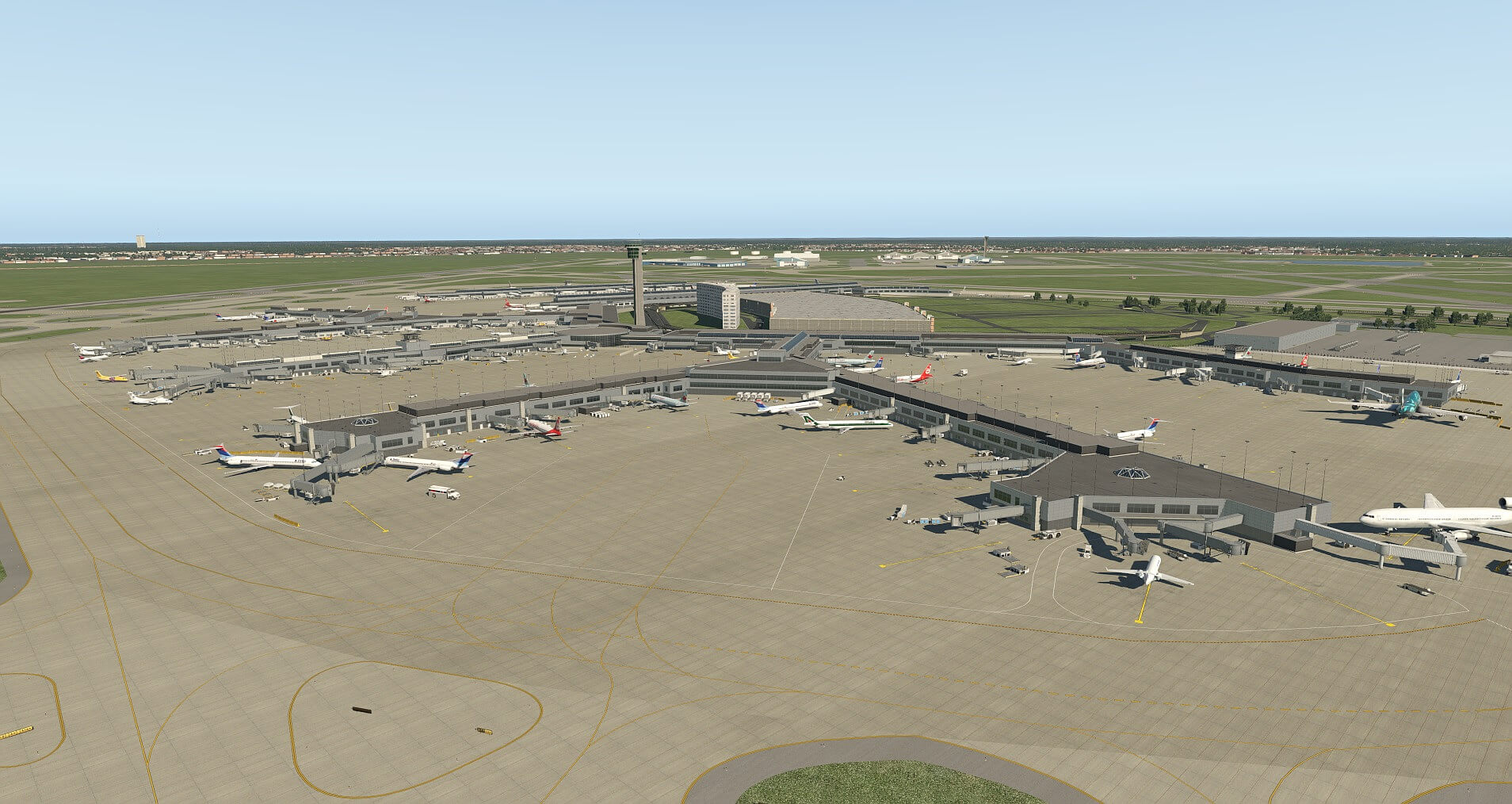
Scott Stoeckle has been using X-Plane since version 3.0 and has contributed nearly 300 submissions to the Gateway. We wanted to share a bit more about this prolific scenery developer.
Where are you located?
Fredericksburg, VA (I’m not in witness protection)
Why did you choose X-Plane as your flight simulator?
At the time I was interested in purchasing a new simulator to replace the subLogic Flight Simulator II for Commodore 64. When I got my first DOS PC I think it had Microsoft Flight Simulator 4.0 installed. I also purchased Flight Assignment A.T.P. but it had many scenery limitations. FS 4.0 was disappointing because to add more scenery or airplanes these were required to be purchased. I started a search for a better platform and there were several to choose from. X-Plane caught my attention as a possibly the best choice because you didn’t need to keep buying extra packages, at that time, global scenery was the only add-on. Also, you had to purchase other simulators at Best Buy or Fry’s, and I hated to have to keep going back to the store to buy more add-ons. I started with X-Plane 3.0.
What motivates you to develop X-Plane scenery?
Love of airplanes and flying for as long as I can remember. Having been an Air Traffic Controller/Traffic Management Specialist/Air Traffic Procedures Specialist for 33 years, a pilot since 1981, and just a general love for aviation, “accuracy of appearance” is the reason. Aviation is very procedural oriented and the necessity that airports appear as correct (i.e. signage, markings, traffic flows, etc. is paramount to me in airport scenery). World-wide aviation is very standardized (English is required for all air traffic control operations, ICAO and the FAA publish documents that depict how airport signs, marking, etc are required to appear. It is a fact that Flight Standards people go to airports, get on their hands and knees to measure the width of taxi-lines to ensure compliance with written procedures.
A side-story: several years ago the FAA developed ‘Converging Runway Operations (CRO)’ procedures for runways that do not actually intersect but the flight paths could. (CRO procedures are necessary but the result is possible reduced airport throughput (that is reduced arrival/departure operations per hour)). The FAA clarified that if 2 “non-intersecting runways” were at least 1-mile apart, then CRO procedures would not be required. An (this is a true story) airport determined that if the threshold on one of the runways was moved just 100 feet (30 meters) then CRO would not be required. So the airport ‘re-painted’ the threshold markings and voila, no CRO procedures needed. This is just an example of how technically accurate airports must comply with written procedures.
Do you have a favorite airport that you have submitted to the Gateway?
Chicago O’Hare (KORD). This airport is going through a complete runway redesign and keeping up with the new runways/taxiways being built, old runways/taxiways being decommissioned keeps me going back every so often to see what’s new and then updating the Gateway.
Do you have any advice for newbie Gateway artists?
I guess you could say from my other comments that being as “technically accurate” is the best advice. All the necessary publications on actual airport design are available on-line. Some are long and boring, but many publications are very easy reading with lots of pictures and diagrams to help pilots and scenery developers. X-Plane gives all the necessary tools to Gateway artist to build an accurate airport. Unfortunately, I see many airports free lanced with an artist’s imagination on how they want the airport to appear. Please, skip the Hollywood design and do it correctly.